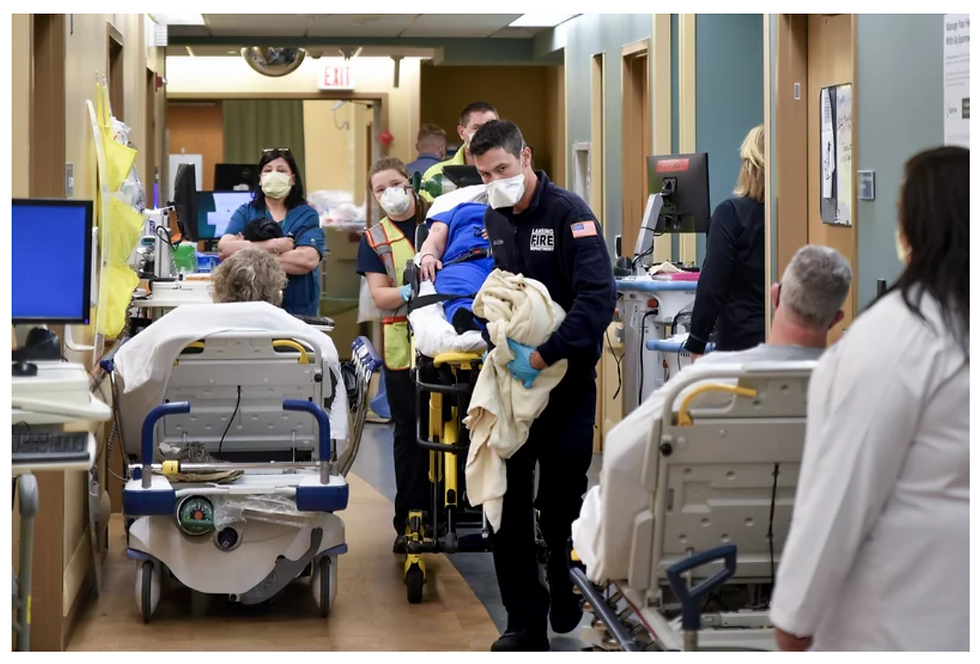Legal Implications for Wound Care Part 3: Standards of Nursing Practice and Litigation Implications
- katherinepiette
- Oct 3, 2022
- 3 min read
By Myra Varnado, BS, RN, CWON, CFCN

Standards of Nursing Practice and Litigation
The common theme in malpractice litigation involving nurses is, “Were the nurse’s actions consistent with the accepted standards of nursing practice?” The American Nurses Association (ANA) broadly describes the standards of nursing practice as the consistent delivery of competent, efficient, and safe patient care demonstrated through the nursing process… patient assessment, diagnosis, outcomes identification, planning, implementation, and evaluation. These standards are based on clinical evidence, which can change with dynamic advancements in clinical research. (1)
While the demonstration of the nursing process is recognized as the general standard of nursing practice, the scope of practice for advanced and specialty nurses may differ depending on the state in which a nurse is licensed. Awareness and adherence to specialized standards are essential as these are dealing with practice well beyond general practice and general education preparation. (2)
Clinical practice guidelines provide a reference source for the generalist nurse and are also an effective way to avoid breaches in specialty care standards. These guidelines are systematically developed statements designed to assist practitioners with clinical decision making and management of specific medical conditions. Guidelines are used to reduce inappropriate variations in practice and to promote the delivery of high-quality, evidence-based health care. They provide an objective mechanism by which healthcare professionals can be held accountable for their actions. Failure to adhere to nursing standards and clinical practice guidelines often results in litigation. (3)
Litigation and level of risk among Nursing Specialties vary based on the complexity and degree of specialization required. In the 4th Edition of the CNA Healthcare Underwriting and the Nurses Service Organization (NSO) Nursing Liability Exposure Claim Report, home-based care accounted for more than 20% of the total closed claims against nurses in 2020, a notable increase from 12.4% in 2015. These statistics not only represent Home Care as a Nursing Specialty but also as a location for care delivery. (4)


Of the two most common health-related injuries associated with litigation, death comprises 40.9%, followed by skin and wound-related injuries, which comprise 18.9%. A recent article in Home Health Care News estimates that about 30% of all home health and hospice patients suffer from wounds. These percentages highlight the increased risk of wound care litigation in home health and the need to proactively prepare home health nurses not only to deliver appropriate wound care but also to document that they have delivered the required standard of specialty care.
Education and Demonstration of Competence
Regardless of a nurse’s educational preparation, it is important to understand that wound care is a highly specialized and rapidly evolving science that requires evidence-based knowledge and ongoing assessment of dynamic, complex disease state processes. Current wound management practice utilizes specialized therapies and advanced dressings designed to address varying wound etiologies and each specific phase of the healing process. At a minimum, nurses must be able to demonstrate their competence to deliver and document safe and efficacious wound care to meet the standard of nursing practice. Insufficient licensing and training of staff is a major driver of facility-acquired wounds and poor clinical outcomes. (5)
Confidence -vs- Competence
Nurses and nurse practitioners often display confidence in their ability to manage complex wounds. This confidence is usually predicated solely upon their longevity in the nursing profession or the fact that they have an advanced nursing degree. While being confident is a desirable trait in wound management, it is not synonymous with competence. Demonstration of competence should always be confirmed upon hire and annually, regardless of a nurse’s background or academic preparation. Certified Wound Nurse Specialists (CWS, CWOCN) are uniquely prepared to manage simple and complex wounds based on current medical evidence. Outcome studies note a higher quality of care and increased efficacy when wounds are managed by nurses who are certified in wound management by an accredited agency. (6)
DeGarmo, S. (2022). American Nurses Association Enterprise. Health Policy and Advanced Practice Nursing: Impact and Implications.
Bickford, C. J. (2021). Updated nursing scope and standards: Foundational document reflects changes in healthcare. American Nurse Journal, 16(7).
Gibelli, F., Bailo, P., Sirignano, A., & Ricci, G. (2022). Pressure Ulcers from the Medico-Legal Perspective: A Case Report and Literature Review. Healthcare, 10(8), 1426.
4th Edition of the CNA Healthcare Underwriting and the Nurses Service Organization (NSO) Nursing Liability Exposure Claim Report Legal/CNA_CLS_NURSE20_061120p2_CF_PROD_ONLINE_SEC.pdf (accessed 9/2/22).
Helgheim, BI, Sandbaek, B. Who Is Doing What in Home Care Services? International Journal of Environmental Research and Public Health. 2021; 18(19):10504.
Monaco, D., Iovino, P., Lommi, M., Marano, G., Zaghini, F., Vellone, E., ... & Sili, A. (2021). Outcomes of wound care nurses’ practice in patients with pressure ulcers: An integrative review. Journal of Clinical Nursing, 30(3-4), 372-384.




Comments